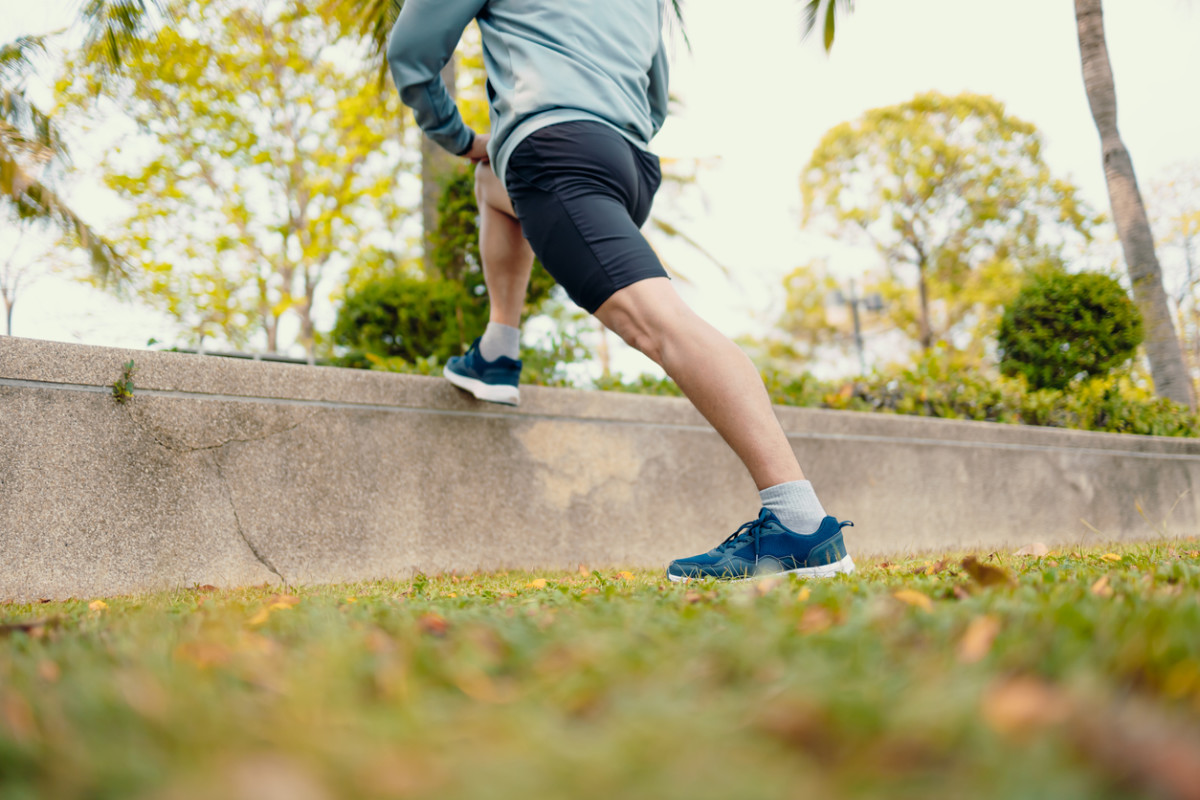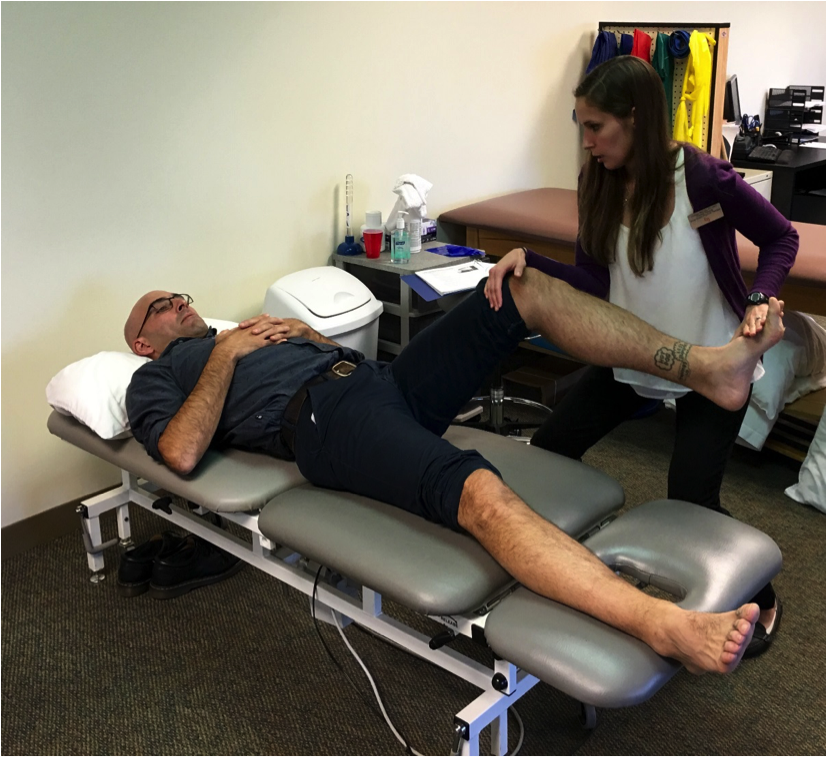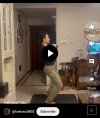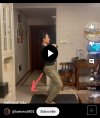You are using an out of date browser. It may not display this or other websites correctly.
You should upgrade or use an alternative browser.
You should upgrade or use an alternative browser.
Knee Pain After Doing C&J
- Thread starter Luwuwu
- Start date
jozko
Level 6 Valued Member
Hard to say, there were cases when barbell RDLs worked almost in real time, but usually it takes several days. If you feel it can be a stability issue, there is a time-proven technique of uphill backward walking mentioned also here: Keeping A Resilient Back as We Age | StrongFirst.My shoulder got hurt years ago doing aerobics, and since then my shoulder, like your knees, cant't stand high volume presses. The jerk makes my shoulder feel comfortable and allows it to get stronger. That is why I love it so much.
I would like to ask, does the hamstring work help reduce the knee pain, or speed up the recovery?
Thank you!
And as a side note, my shoulders really love single kettlebell overhead squat.
Luwuwu
Level 5 Valued Member
Got it! Many things I can add to my routine now!Hard to say, there were cases when barbell RDLs worked almost in real time, but usually it takes several days. If you feel it can be a stability issue, there is a time-proven technique of uphill backward walking mentioned also here: Keeping A Resilient Back as We Age | StrongFirst.
And as a side note, my shoulders really love single kettlebell overhead squat.
The overhead squat has remained foreign to me. I would try it and put feedback here.
ntapsak
Level 6 Valued Member
Repeat of what Don said - knee pain for me from C&J is almost always related to how well these muscles are firing. I recommend lots of sidesteps both for warmup and for cool down.Side steps and monster walks and clam shells with mini bands. Also, stretch and strengthen your calves/ankles/ tibialis anterior.
There may also be something to GS jerks where the knees are always going over your toes in the first dip - they're like lots of step downs, for hundreds of reps. My knees feel healthier now.
Luwuwu
Level 5 Valued Member
Good to have someone with similar experience! Many thanks!Repeat of what Don said - knee pain for me from C&J is almost always related to how well these muscles are firing. I recommend lots of sidesteps both for warmup and for cool down.
There may also be something to GS jerks where the knees are always going over your toes in the first dip - they're like lots of step downs, for hundreds of reps. My knees feel healthier now.
Brett Jones
StrongFirst Director of Education
Master Certified Instructor
Elite Certified Instructor
Beast Tamer
To ntapsak's point—your first and second dip are "all knees"
Try to find a bit of "hips" in the dips
This will shorten the dips a bit and distribute the load
Try to find a bit of "hips" in the dips
This will shorten the dips a bit and distribute the load
Kenny Croxdale
Level 7 Valued Member
Possible Cause and CureThe knee pain that appears after a session disturbs me a lot. Sometimes the left knee only, sometimes both. I do not know what has caused this.
A number of studies have linked weak, inflexible hamstrings to different types of knee pain, ...

Can Tight Hamstrings Cause Knee Pain?
Learn how tight hamstrings can cause knee pain, plus easy tips to prevent and treat it, including hamstring stretches recommended by our physical therapists.
According to Lindsay Weston, PT, DPT, a leading cause of knee pain and instability is weakness of the hamstrings.

The Role Hamstrings Play in Protecting Knee Ligaments - Body Gears
At Body Gears located in Chicago, Oak, Wheaton, and Winnetka, our physical therapists use techniques to turn on these weak muscles and then teach you how to do exercises to maintain this activation and to strengthen the hamstrings.
- Romanian Deadlift.
- Single-Leg Romanian Deadlift.
- Bulgarian Split Squats.
- Prone Leg Curls.
- Deadlift.
- Kettlebell Swings.
- Good Mornings.
Joel the Savage
Level 6 Valued Member
If you look at your knees you can see very much travel forwards (picture of the catch attached)
Try to sit back a bit more with the hips.
If that does not work, it's a volume issue (instead of what I believe is likely a angle+force that exceeds current tolerance)
Try to sit back a bit more with the hips.
If that does not work, it's a volume issue (instead of what I believe is likely a angle+force that exceeds current tolerance)
Attachments
JNort
Level 2 Valued Member
All the above recommendations are solid and address many possible issues. However, I would listen to Brett Jones and Joel the Savage. Correct your technique first before adding in different exercises as there appears to be too much forward movement of the knees on the up and down dip portion. So, too much loading on the knees. Utilize your hips more to spread the load.
Bauer
Level 8 Valued Member
Lots of good recommendations here.
I think too much too soon plays a role here, especially with stability issues. When I started with S&S my feet and ankles were my weakest link. It was tempting to ignore the discomfort and go for higher reps. But eventually I hade to accept to pace myself, listening to any discomfort in those areas. After a while they caught up.
Anyway, I think the bottom line is to play and practice.
Be mindful of how your knees feel when experimenting with stuff like this:
- Try going faster or slower
- Dip deeper or more shallow
- Dip more or less explosively
- Lean back more - and staying more upright.
- Distributing the weight differently on your feet
- Trying different stances
- Waiting more or less in any of the positions
- Doing more squats (possibly split squats) or rocking during the warmup
- ...
You can also do some of these experiments without weight and more like an OS reset. I have resolved many technique issues this way. Just play and be mindful - and your motor patterns will get better with too much conscious effort. (And it makes sessions more enjoyable too!) Trust you body with learning good technique when giving it enough information to work with.
I think too much too soon plays a role here, especially with stability issues. When I started with S&S my feet and ankles were my weakest link. It was tempting to ignore the discomfort and go for higher reps. But eventually I hade to accept to pace myself, listening to any discomfort in those areas. After a while they caught up.
Anyway, I think the bottom line is to play and practice.
Be mindful of how your knees feel when experimenting with stuff like this:
- Try going faster or slower
- Dip deeper or more shallow
- Dip more or less explosively
- Lean back more - and staying more upright.
- Distributing the weight differently on your feet
- Trying different stances
- Waiting more or less in any of the positions
- Doing more squats (possibly split squats) or rocking during the warmup
- ...
You can also do some of these experiments without weight and more like an OS reset. I have resolved many technique issues this way. Just play and be mindful - and your motor patterns will get better with too much conscious effort. (And it makes sessions more enjoyable too!) Trust you body with learning good technique when giving it enough information to work with.
Luwuwu
Level 5 Valued Member
Thank you sir! Clearly the hips are neglected when I jerk. I would say the same is true with the overhead squat part of the jerk, my knees get crushed and glutes not fully contracted.To ntapsak's point—your first and second dip are "all knees"
Try to find a bit of "hips" in the dips
This will shorten the dips a bit and distribute the load
This is wonderful sir! Thank you!Possible Cause and Cure
A number of studies have linked weak, inflexible hamstrings to different types of knee pain, ...

Can Tight Hamstrings Cause Knee Pain?
Learn how tight hamstrings can cause knee pain, plus easy tips to prevent and treat it, including hamstring stretches recommended by our physical therapists.www.hingehealth.com
According to Lindsay Weston, PT, DPT, a leading cause of knee pain and instability is weakness of the hamstrings.
The 7 Best Hamstring Exercises
The Role Hamstrings Play in Protecting Knee Ligaments - Body Gears
At Body Gears located in Chicago, Oak, Wheaton, and Winnetka, our physical therapists use techniques to turn on these weak muscles and then teach you how to do exercises to maintain this activation and to strengthen the hamstrings.bodygears.com
- Romanian Deadlift.
- Single-Leg Romanian Deadlift.
- Bulgarian Split Squats.
- Prone Leg Curls.
- Deadlift.
- Kettlebell Swings.
- Good Mornings.
My left hamstring is always tighter than the other. Perhaps this is why sometimes my left knee feels uncomfortable and the other does not.
Though, I wouldn't consider them to be weak, after two and a half years of kettlebell training and more than 100k swings.
Thank you! Already practicing and altering how I dip.If you look at your knees you can see very much travel forwards (picture of the catch attached)
Try to sit back a bit more with the hips.
If that does not work, it's a volume issue (instead of what I believe is likely a angle+force that exceeds current tolerance)
Plan to cut the volume by half, gradually add up when my knee pain is trouble no longer.
This is exactly what I was thinking! Thank you for your suggestion!All the above recommendations are solid and address many possible issues. However, I would listen to Brett Jones and Joel the Savage. Correct your technique first before adding in different exercises as there appears to be too much forward movement of the knees on the up and down dip portion. So, too much loading on the knees. Utilize your hips more to spread the load.
Cannot thank you enough! When I started my C&J practice I learned the movement swiftly, or at least I thought I did. Then I started the A&A program, eager to do more and more and more, and see results.Lots of good recommendations here.
I think too much too soon plays a role here, especially with stability issues. When I started with S&S my feet and ankles were my weakest link. It was tempting to ignore the discomfort and go for higher reps. But eventually I hade to accept to pace myself, listening to any discomfort in those areas. After a while they caught up.
Anyway, I think the bottom line is to play and practice.
Be mindful of how your knees feel when experimenting with stuff like this:
- Try going faster or slower
- Dip deeper or more shallow
- Dip more or less explosively
- Lean back more - and staying more upright.
- Distributing the weight differently on your feet
- Trying different stances
- Waiting more or less in any of the positions
- Doing more squats (possibly split squats) or rocking during the warmup
- ...
You can also do some of these experiments without weight and more like an OS reset. I have resolved many technique issues this way. Just play and be mindful - and your motor patterns will get better with too much conscious effort. (And it makes sessions more enjoyable too!) Trust you body with learning good technique when giving it enough information to work with.
This is a mistake commonly made by many. I should have been more patient and practiced more.
Bauer
Level 8 Valued Member
At the moment I like deviating from the original plan, by doing ladders, currently ladders of 1 and 2 reps. I use the single rep for trying things without time pressure, and then try to apply whatever I have found in the following set of 2.Thank you sir! Clearly the hips are neglected when I jerk. I would say the same is true with the overhead squat part of the jerk, my knees get crushed and glutes not fully contracted.
This is wonderful sir! Thank you!
My left hamstring is always tighter than the other. Perhaps this is why sometimes my left knee feels uncomfortable and the other does not.
Though, I wouldn't consider them to be weak, after two and a half years of kettlebell training and more than 100k swings.
Thank you! Already practicing and altering how I dip.
Plan to cut the volume by half, gradually add up when my knee pain is trouble no longer.
This is exactly what I was thinking! Thank you for your suggestion!
Cannot thank you enough! When I started my C&J practice I learned the movement swiftly, or at least I thought I did. Then I started the A&A program, eager to do more and more and more, and see results.
This is a mistake commonly made by many. I should have been more patient and practiced more.
The density with CJCJ or even CJCJCJ can work against a playful approach. Same reps, but timeless approach might work as well for more deliberate practice.
Anyway, your form looks solid and you will be fine!
Btw, sometimes, taking a break for two weeks, practicing other moves will (a) already resolve acute naggings, and (b) improve motor patterns, as the brain discards unsuccessful patterns first.
Luwuwu
Level 5 Valued Member
Absolutely genius! I think this is exactly what I need to do!At the moment I like deviating from the original plan, by doing ladders, currently ladders of 1 and 2 reps. I use the single rep for trying things without time pressure, and then try to apply whatever I have found in the following set of 2.
The density with CJCJ or even CJCJCJ can work against a playful approach. Same reps, but timeless approach might work as well for more deliberate practice.
Anyway, your form looks solid and you will be fine!
Btw, sometimes, taking a break for two weeks, practicing other moves will (a) already resolve acute naggings, and (b) improve motor patterns, as the brain discards unsuccessful patterns first.
Thank you!
Pete L
Level 6 Valued Member
I'd also consider returning to the progression including the long push press, as outlined in SF-KB.Absolutely genius! I think this is exactly what I need to do!
Thank you!
ShawnM
Level 9 Valued Member
I get a lot of knee pain if I do 2HS instead of 1HS. I have a history of OA and need both of my knees replaced. If I do 2HS with any size bell I have to widen my stance to get a proper hinge. This widening of my legs causes my knee pain/OA flare ups. If you are doing double bells, you might be aggravating an injury that hasn't quite presented itself yet. I'd be careful with it and have a professional check it out.I have been doing the A+A C&J protocol prescribed in Kettlebell StrongFirst for a while, currently C+J+C with a pair of 24 for 30 minutes done. The knee pain that appears after a session disturbs me a lot. Sometimes the left knee only, sometimes both. I do not know what has caused this.
Is there anyone who has the same experience? What have you done to reduce the pain and how does it work? Hopefully I could get some brilliant ideas. Any suggestions, instructions or experiences would be much appreciated.
Thank you very much!
Luwuwu
Level 5 Valued Member
Greetings gentlemen! I just finished the second A+A session this week and would like to post an update.
For starters, my knee pain is no more! Never had I felt the slightest discomfort in my knees. Magic!
I did a lot of things. I am not certain if this is the result of some of them or all of them. I intend to make experiments and figure it out.
This is what I did:
My warm-up is taking more time than my training now. I did Sore Joints Solution, as usual. I did my usual stretching. I added a lot of side steps, monster walks and clam shells. Following that was sets of bodyweight single-leg deadlifts.
For my training. I made the following adjustments: I changed the way I dip, utilising more hip and less knee. I slowed my tempo, and made my lock-out soft so that my knees do not get crashed. The whole movement is much slower.
As for the volume. On Tuesday I did sets of C+J for 30 min OTM. Today I did ladders of C+J and C+J+J for 30 min OTM. None of them were of any trouble.
Following training was some PRI breathing, which was recommended my one of my friends who works for the institute. Then my usual cool-down stretching.
It is delightful to be rid of my trouble. It is Wonderful to have received so much help from the forum! Thank you all for your help!
For starters, my knee pain is no more! Never had I felt the slightest discomfort in my knees. Magic!
I did a lot of things. I am not certain if this is the result of some of them or all of them. I intend to make experiments and figure it out.
This is what I did:
My warm-up is taking more time than my training now. I did Sore Joints Solution, as usual. I did my usual stretching. I added a lot of side steps, monster walks and clam shells. Following that was sets of bodyweight single-leg deadlifts.
For my training. I made the following adjustments: I changed the way I dip, utilising more hip and less knee. I slowed my tempo, and made my lock-out soft so that my knees do not get crashed. The whole movement is much slower.
As for the volume. On Tuesday I did sets of C+J for 30 min OTM. Today I did ladders of C+J and C+J+J for 30 min OTM. None of them were of any trouble.
Following training was some PRI breathing, which was recommended my one of my friends who works for the institute. Then my usual cool-down stretching.
It is delightful to be rid of my trouble. It is Wonderful to have received so much help from the forum! Thank you all for your help!
If I may jump in a bit late on this, a lot of what people _think_ is a problem with their knees turns out to be a lack of mobility in their hips or ankles. In the case of your jerk, it may be not a lack of hip mobility so much as that you weren't using your hips. Either way, not moving your hips when you should, whether through less-than-stellar form or simple lack of mobility, can make itself known in your knees - that's the point I wanted to make.Update
Just tried the single leg dead lift without weights. I can hardly keep the balance and my knee keeps trembling left and right. I am thinking it might be a knee stability issue.
-S-
Luwuwu
Level 5 Valued Member
Many thanks, Steve! I think you are absolutely correct in terms of not using my hips. Years of swing training might has given me more confidence than I should have that I can always use my hips well enough. This is quite a lesson I've learned.If I may jump in a bit late on this, a lot of what people _think_ is a problem with their knees turns out to be a lack of mobility in their hips or ankles. In the case of your jerk, it may be not a lack of hip mobility so much as that you weren't using your hips. Either way, not moving your hips when you should, whether through less-than-stellar form or simple lack of mobility, can make itself known in your knees - that's the point I wanted to make.
-S-


